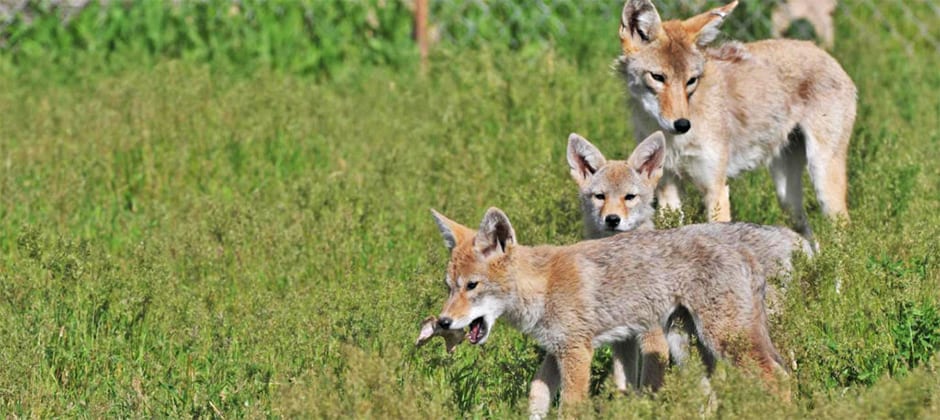Share this article
Watch: How effective is coyote hazing?
In cities and towns across America, coyotes are thriving. This increased contact with people has led to bolder and more aggressive behaviors towards people and pets.
Hazing often is promoted as a nonlethal method to reduce urban coyote conflicts, but there have been few controlled studies to evaluate its effectiveness.
To better understand how coyotes (Canis latrans) with different human experiences respond to hazing, USDA-Wildlife Services and Utah State University scientists conducted a behavioral experiment with captive coyotes at the National Wildlife Research Center’s field station in Millville, Utah. (You can watch a video of their work with coyotes here.)
Captive coyotes were exposed to one of five human experiences: an adult walking, an adult walking with a dog, an adult hand-feeding coyotes and walking, a child walking and a child hand-feeding coyotes and walking. After repeating the human experiences with the coyotes for five days, the participating adult or child then was asked to haze any coyote that approached them to within 1 to 3 meters. Hazing involved shaking a tin can full of coins, yelling and stomping their feet.
Results showed the number of times coyotes approached and experienced hazing decreased over time. This suggests that coyotes with hazing experience learn to avoid behaviors, such as getting too close to people, that might result in more hazing. Additionally, coyotes that were fed or were followed by a person with a dog were more likely to approach a person even if it resulted in being hazed.
Researchers concluded that coyote hazing can work, but a coyote’s past experiences with people influences hazing effectiveness. Thus, to reduce urban coyote conflicts, it’s important to encourage people to proactively haze coyotes, avoid pet-coyote interactions and not feed them.
View scenes from the research below.
Header Image:
Research at the NWRC field station suggests coyotes with hazing experience learn to avoid behaviors, such as getting too close to people, that might result in more hazing.
©Steve Guymon/National Wildlife Research Center








